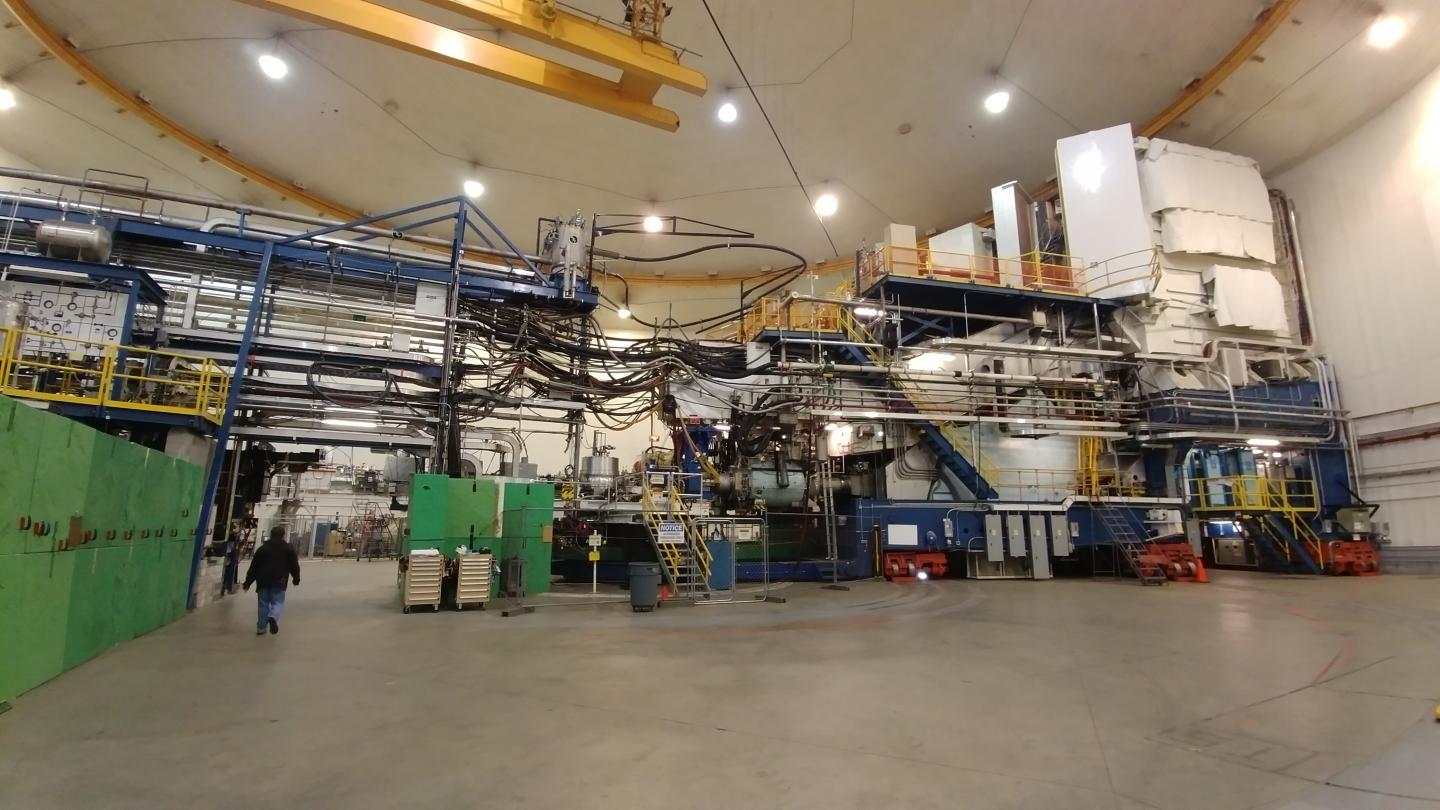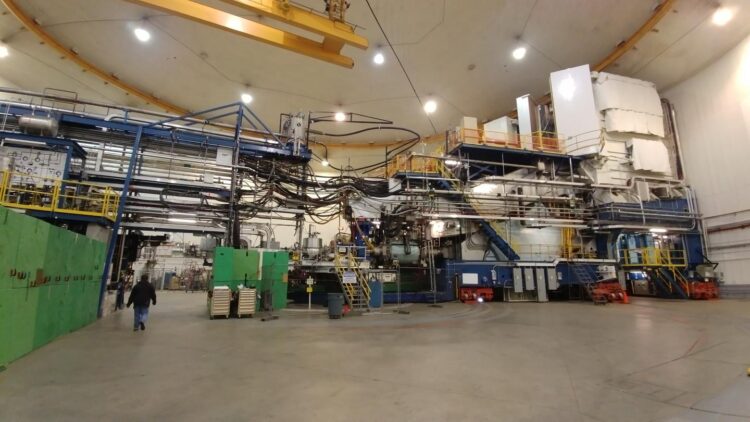Project approval in hand, the MOLLER experiment moves forward to provide a precise measurement of a well-understood process in hopes of uncovering new physics

Credit: DOE’s Jefferson Lab
A new probe of the humble electron may provide insight into the forces at work inside the heart of matter. Now, the MOLLER experiment at the U.S. Department of Energy’s Thomas Jefferson National Accelerator Facility is one step closer to carrying out an experiment to gain that new insight. The experiment has just received a designation of Critical Decision 1, or CD-1, from the DOE, which is a greenlight to move forward in design and prototyping of equipment.
The Measurement of a Lepton-Lepton Electroweak Reaction Experiment, or MOLLER experiment, will probe the electrons inside matter to make a precise measurement of the electron’s weak charge. The weak force is one of the four forces in nature, along with the electromagnetic, the strong force and gravity. The electron’s weak charge is a gauge of how much influence the weak force exerts on the electron.
A precision measurement of this quantity provides a stringent test of the Standard Model, the theory that describes the particles and interactions that make up everyday matter, including a precise prediction of the electron’s weak charge.
“The MOLLER experiment is looking for subtle departures from the Standard Model in the scattering of a polarized electron beam off target electrons,” said James “Jim” Fast, Jefferson Lab’s MOLLER project manager. “By doing a very high-precision measurement of a process that is theoretically predicted very well, one can look for tiny effects that probe new physics at very high masses, similar to those of direct searches at the Large Hadron Collider at CERN.”
Nuclear physicists, led by collaboration spokesperson Krishna Kumar from the University of Massachusetts Amherst, have been working on the early stages of this experiment for several years to make the scientific case, develop a conceptual design and put in place a robust plan to carry out the experiment at Jefferson Lab. The CD-1 designation by DOE confirms that hard work and a path forward.
“What this means in a practical sense is that the DOE has selected performing the MOLLER experiment at Jefferson lab as a Major Item of Equipment investment and set a cost range. This initiates the engineering design effort and prototyping of the equipment that will make up the MOLLER experiment,” Fast explains.
While this quantity has been measured with very high precision at DOE’s SLAC National Accelerator Lab, the MOLLER experiment offers the opportunity to measure this quantity again with five times better precision than the SLAC experiment. This greatly increased precision is what is needed for the measurement to be used as a stringent test of the Standard Model.
Fast said the next step for the MOLLER experiment is to begin engineering design in earnest. Once that step is complete, the project will need to achieve Critical Decision 2, “Approve Performance Baseline,” where the scope, schedule and budget are formally established and then CD-3 “Approve Start of Construction.” Only then will the nuclear physicists be authorized to begin building equipment for the experiment.
While it is gratifying to have achieved this major project milestone, Fast iterated that some of the most enjoyable aspects of working on the project goes beyond the checkboxes.
“What was extremely rewarding for me was seeing the growth in management acumen of the team, most of whom have never worked on a project with this level of formality and scrutiny,” Fast said. “I’ve also been very impressed with the dedication of the collaboration. Many of the project requirements for approval are not the most exciting things for scientists to devote time and energy to, but the scientific collaboration has really stepped up to get those things done and done well.”
Fast also acknowledges the strong support that the project has received from managers at the DOE and at DOE’s local Thomas Jefferson Site Office.
He said, “It’s been great working with all of them over the past seven months to get MOLLER through CD-1 and on to engineering design. Now the real work – and fun – begin!”
###
Further Reading?
Particle Physicist Takes the Lead on Groundbreaking Electron Measurement, https:/
Jefferson Science Associates, LLC, a joint venture of the Southeastern Universities Research Association, Inc. and PAE, manages and operates the Thomas Jefferson National Accelerator Facility, or Jefferson Lab, for the U.S. Department of Energy’s Office of Science.
DOE’s Office of Science is the single largest supporter of basic research in the physical sciences in the United States and is working to address some of the most pressing challenges of our time. For more information, visit https:/
Media Contact
Kandice Carter
[email protected]
Original Source
https:/





